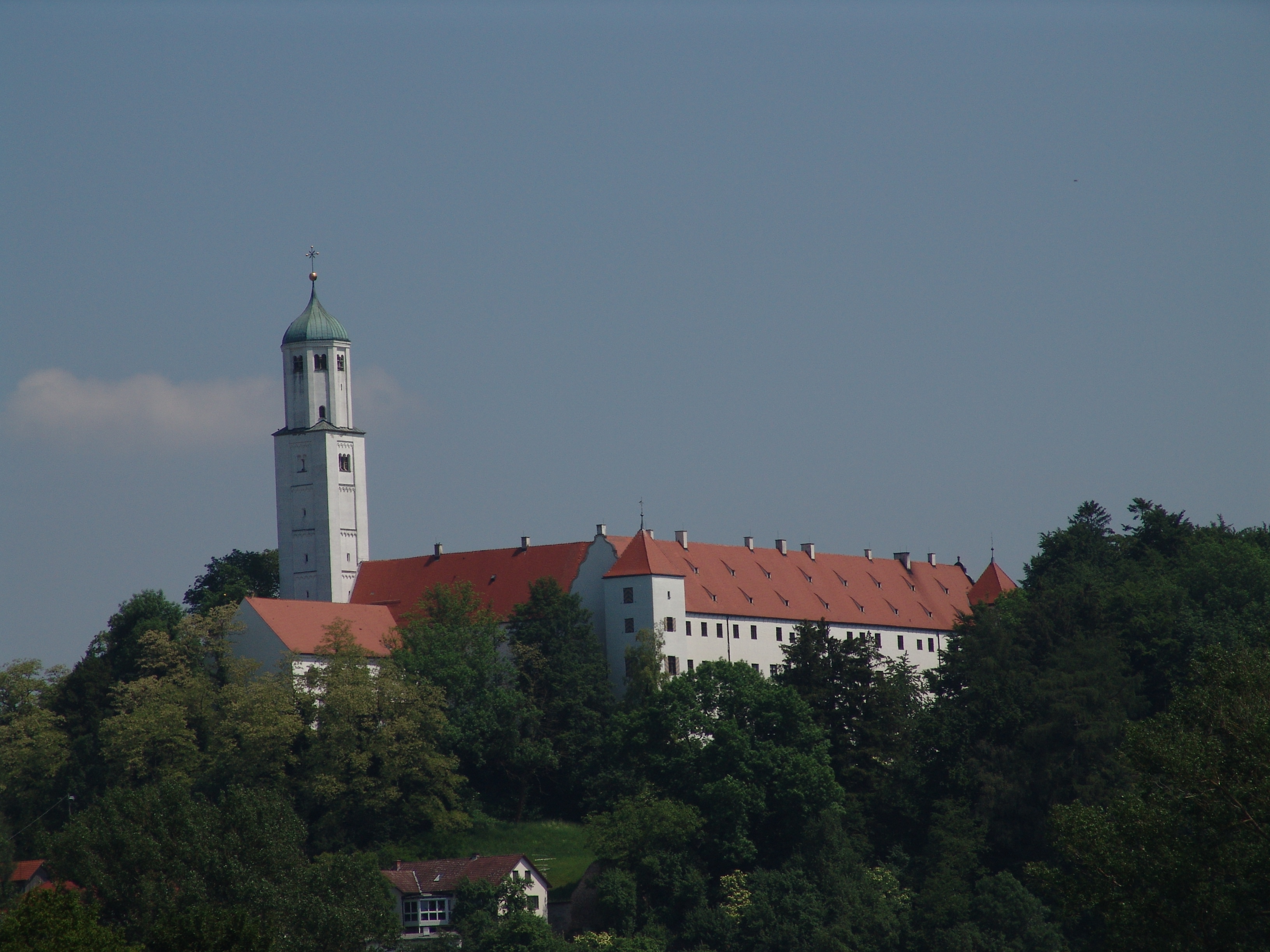|
Zusmarshausen
Zusmarshausen is a municipality in the district of Augsburg, Bavaria, Germany Germany, officially the Federal Republic of Germany, is a country in Central Europe. It lies between the Baltic Sea and the North Sea to the north and the Alps to the south. Its sixteen States of Germany, constituent states have a total popu .... The 1648 Battle of Zusmarshausen took place here. It lies on the river Zusam and is a part of the Augsburg Western Woods Nature Park. Its districts are Friedensdorf, Gabelbach, Gabelbachergreut, Steinekirch, Streitheim, Vallried, Wollbach, Wörleschwang and Zusmarshausen itself. Local council (Marktgemeinderat) Since the 2020 municipal elections, the Local Council of Zusmarshausen consists of 20 seats, allocated as follows: * CSU – 8 seats (40.9 %) * Freie Wählervereinigung (FWV) (Free Voters' Association) – 7 seats (35.3 %) * Bürgerliste Zusmarshausen (BLZus) (Citizens' List) – 5 seats (23.8 %) Fraktionsergänzungen (Recent Member ... [...More Info...] [...Related Items...] OR: [Wikipedia] [Google] [Baidu] |
Battle Of Zusmarshausen
The Battle of Zusmarshausen was fought on 17 May 1648 between Bavarian- Imperial forces under von Holzappel and an allied Franco-Swedish army under the command of Carl Gustaf Wrangel and Turenne in the modern Augsburg district of Bavaria, Germany. The allied force emerged victorious, and the Imperial army was only rescued from annihilation by the stubborn rearguard fighting of Raimondo Montecuccoli and his cavalry. Zusmarshausen was the last major battle of the war to be fought on German soil during the Thirty Years' War, and was also the largest battle (in terms of numbers of men involved; casualties were relatively light) to take place in the final three years of the war. Background By the late 1640s all the belligerents in the Thirty Years' War were exhausted by three decades of brutal fighting. Delegates had already convened in the Westphalian cities of Münster and Osnabrück to negotiate a peace treaty in 1646, but while the peace talks were in progress the opposing ... [...More Info...] [...Related Items...] OR: [Wikipedia] [Google] [Baidu] |
Augsburg (district)
Augsburg (; Swabian German: ''Augschburg'') is a ''Landkreis'' (district) in Swabia, Bavaria, Germany. It is bounded by (from the east and clockwise) the city of Augsburg and the districts of Aichach-Friedberg, Landsberg, Ostallgäu, Unterallgäu, Günzburg, Dillingen and Donau-Ries. The city of Augsburg is not part of the district, but nonetheless is its administrative seat. History In Roman times the Via Claudia connected the city of Augsburg and Italy. In 233 the Alamanni broke through the limes, and the Roman rule over Swabia was ended. During the time of the Holy Roman Empire Augsburg was a bishopric principality. The city and the adjoining regions became subordinate to Bavaria after the Napoleonic Wars. The district of Augsburg was established in 1972 by merging the former districts of Augsburg and Schwabmünchen and parts of other adjoining districts. More than twice as old as Nuremberg or Munich, Augsburg was founded in 15 B.C. by the Roman commanders Drusus and ... [...More Info...] [...Related Items...] OR: [Wikipedia] [Google] [Baidu] |
Zusam
The Zusam () is a river in Bavaria, Germany and a right tributary of the Danube. Its source is just north of the village of Könghausen, in the Unterallgäu district of Bavaria. It flows north for approximately 97 km, before converging into the Danube near the town of Donauwörth Donauwörth (; ) is a town and the capital of the Donau-Ries district in Swabia, Bavaria, Germany. It is said to have been founded by two fishermen where the rivers Danube (Donau) and Wörnitz meet. The city is part of the scenic route called "R .... Towns and villages along the Zusam include Obergessertshausen, Memmenhausen, Muttershofen, Ziemetshausen, Dinkelscherben, Fleinhausen, Zusmarshausen, Zusamzell, Wertingen, Frauenstetten, and Buttenwiesen. References Rivers of Bavaria Tributaries of the Danube Bodies of water of Günzburg (district) Rivers of Germany {{Bavaria-river-stub ... [...More Info...] [...Related Items...] OR: [Wikipedia] [Google] [Baidu] |
Augsburg Western Woods Nature Park
The Augsburg-Western Woods Nature Park () is one of the two ''nature parks'' in Bavarian Swabia (administrative region), Swabia. The 1988 founded park has a size of . The nature park is bordered by the rivers Danube, Wertach (river), Wertach, Schmutter, Flossach and Mindel (river), Mindel. The biggest part of it is located in Augsburg (district) and extends to the edge of the districts Unterallgäu, Günzburg (district) and Dillingen (district). Landscape The gentle, hilly landscape is divided by the streams Schmutter, Neufnach and Zusam into gently undulating plateaus and flat interfluves. It is part of the Tertiary Hills between the Danube and the Bavarian Alpine Foreland. Nearly half (43%) of the region are forested and the proportion of grassland are high, too. The northern part around Welden is named Holzwinkel, the middle part around Dinkelscherben, Reischenau and the south part (south of the line Thannhausen-Ziemetshausen-Fischach-Gessertshausen-Stadtbergen) are the Staude ... [...More Info...] [...Related Items...] OR: [Wikipedia] [Google] [Baidu] |
Ortsteil
A village is a human settlement or Residential community, community, larger than a hamlet (place), hamlet but smaller than a town with a population typically ranging from a few hundred to a few thousand. Although villages are often located in rural areas, the term urban village is also applied to certain urban neighborhoods. Villages are normally permanent, with fixed dwellings; however, transient villages can occur. Further, the dwellings of a village are fairly close to one another, not scattered broadly over the landscape, as a dispersed settlement. In the past, villages were a usual form of community for societies that practice subsistence agriculture and also for some non-agricultural societies. In Great Britain, a hamlet earned the right to be called a village when it built a Church (building), church. [...More Info...] [...Related Items...] OR: [Wikipedia] [Google] [Baidu] |
Bayerisches Landesamt Für Statistik
The statistical offices of the German states (German language, German: ) carry out the task of collecting official statistics in Germany together and in cooperation with the Federal Statistical Office of Germany, Federal Statistical Office. The implementation of statistics according to Article 83 of the Basic Law for the Federal Republic of Germany, constitution is executed at state level. The Bundestag, federal government has, under Article 73 (1) 11. of the constitution, the exclusive legislation for the "statistics for federal purposes." There are 14 statistical offices for the States of Germany, 16 states: See also * Federal Statistical Office of Germany References {{Reflist National statistical services, Germany Lists of organisations based in Germany, Statistical offices Official statistics, Germany ... [...More Info...] [...Related Items...] OR: [Wikipedia] [Google] [Baidu] |
Municipalities Of Germany
MunicipalitiesCountry Compendium. A companion to the English Style Guide European Commission, May 2021, pages 58–59. (, ; singular ) are the lowest level of official territorial division in . This can be the second, third, fourth or fifth level of territorial division, depending on the status of the municipality and the '''' (federal state) it is part of. The city-states Berlin, Brem ... [...More Info...] [...Related Items...] OR: [Wikipedia] [Google] [Baidu] |
Bavaria
Bavaria, officially the Free State of Bavaria, is a States of Germany, state in the southeast of Germany. With an area of , it is the list of German states by area, largest German state by land area, comprising approximately 1/5 of the total land area of Germany, and with over 13.08 million inhabitants, it is the list of German states by population, second most populous German state, behind only North Rhine-Westphalia; however, due to its large land area, its population density is list of German states by population density, below the German average. Major cities include Munich (its capital and List of cities in Bavaria by population, largest city, which is also the list of cities in Germany by population, third largest city in Germany), Nuremberg, and Augsburg. The history of Bavaria includes its earliest settlement by Iron Age Celts, Celtic tribes, followed by the conquests of the Roman Empire in the 1st century BC, when the territory was incorporated into the provinces of Ra ... [...More Info...] [...Related Items...] OR: [Wikipedia] [Google] [Baidu] |
Germany
Germany, officially the Federal Republic of Germany, is a country in Central Europe. It lies between the Baltic Sea and the North Sea to the north and the Alps to the south. Its sixteen States of Germany, constituent states have a total population of over 84 million in an area of , making it the most populous member state of the European Union. It borders Denmark to the north, Poland and the Czech Republic to the east, Austria and Switzerland to the south, and France, Luxembourg, Belgium, and the Netherlands to the west. The Capital of Germany, nation's capital and List of cities in Germany by population, most populous city is Berlin and its main financial centre is Frankfurt; the largest urban area is the Ruhr. Settlement in the territory of modern Germany began in the Lower Paleolithic, with various tribes inhabiting it from the Neolithic onward, chiefly the Celts. Various Germanic peoples, Germanic tribes have inhabited the northern parts of modern Germany since classical ... [...More Info...] [...Related Items...] OR: [Wikipedia] [Google] [Baidu] |


